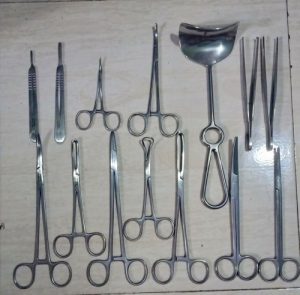During childbirth, cesarean section is indicated if there is an obstacle to the passage of the child by “vaginal route”, when it is necessary to terminate the pregnancy before term or when the baby’s life is threatened. Learn about the main causes of having a Caesarean section, as well as a description of this surgery and its consequences.

When should a cesarean section be had?
When vaginal birth is impossible
This operation is performed under certain conditions for the safety of mother and child. Generally, it occurs when it is impossible to deliver vaginally, that is to say by natural means:
In the event of a disproportion between the pelvis and the size of the child: if the dimensions of the mother’s pelvis are insufficient or if the child has too large a volume,
If the baby is in a bad position (forehead or transverse presentation, or in some cases breech presentation causing too many complications),
In the case of a premature child (of too low weight – hypotrophy), who would suffer from childbirth by natural means,
If the cervix remains insufficiently dilated despite increased contractions and the use of dilator drugs,
If the mother has a fibroid, an ovarian cyst or a placenta previa (covering placenta preventing the fetus from passing through the vagina).
For safety reasons for the child or the mother
Cesarean section is also performed when childbirth should not be carried out by natural means, or when the pregnancy must be terminated before term, for reasons of safety for the child or the mother:
- In case of maternal hemorrhage,
- In case of excessive fetal suffering,
- In multiple pregnancy: more than two children,
- If the mother is sick,
- In case of incompatibility of rhesus,
- If the mother, who is too tired or has significant cardiovascular ailments, is no longer able to complete the delivery, and if continuing labor represents a danger to the child’s life.
Depending on the case, the cesarean section can be scheduled at the end of the pregnancy or decided during childbirth. If an epidural anesthesia is already administered to the patient, no other mode of anesthesia will be necessary to have a cesarean section during delivery.
Should a cesarean necessarily follow another?
If the caesarean section was indicated for a permanent cause (such as a too narrow pelvis), then a new caesarean section will be necessary for a future delivery with the help of cesarean section surgical instrument set.
On the other hand, if the first recourse to a cesarean section was motivated by accidental causes (hemorrhage, fetal distress, breech presentation that is not related to a uterine malformation, etc.), it is not compulsory to have to have another caesarean section.
However, it should be noted that a previous caesarean section increases the risk of recourse to this practice for one main reason: the scar from the first operation can rupture under the effect of uterine contractions and thus expose the mother and the child. to very significant complications.
For more details, please visit: jimymedical.co.uk
 Bloggers Trend Keeping You Up To Date
Bloggers Trend Keeping You Up To Date
